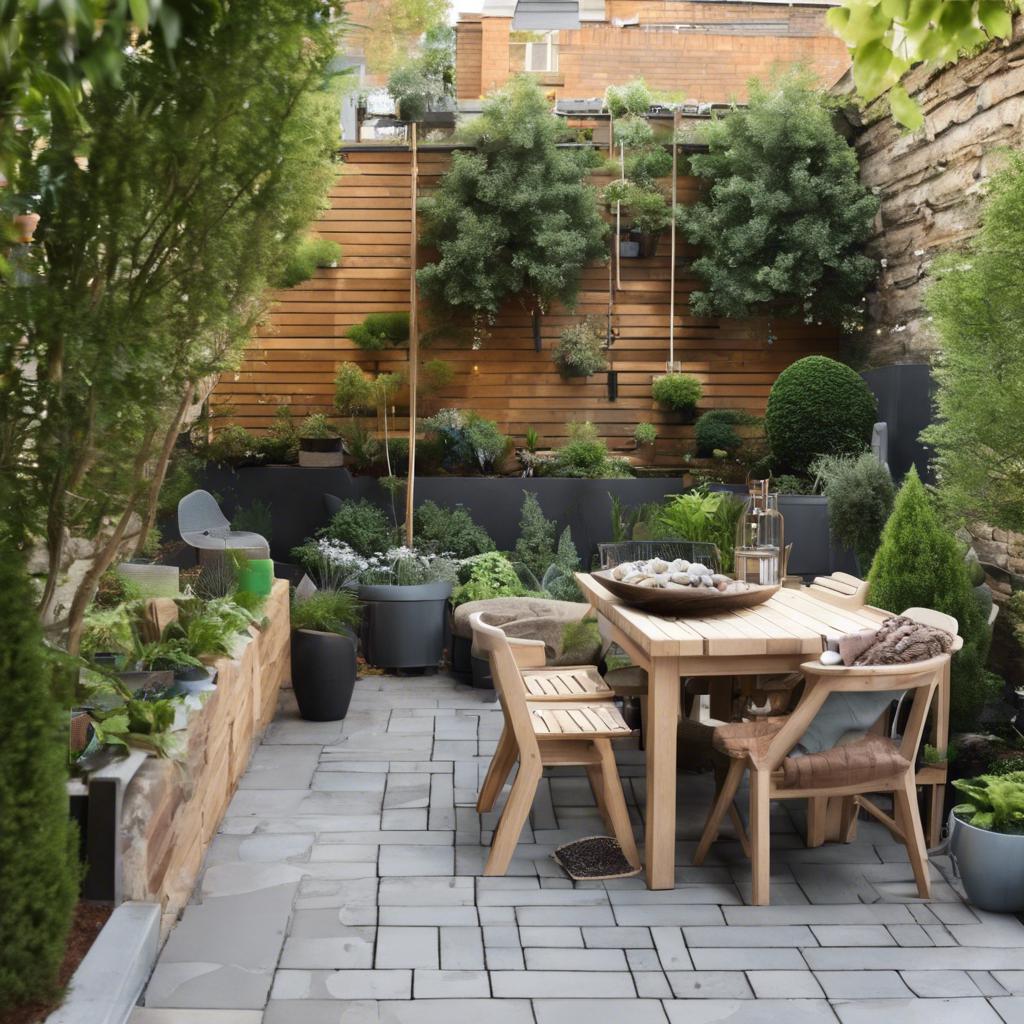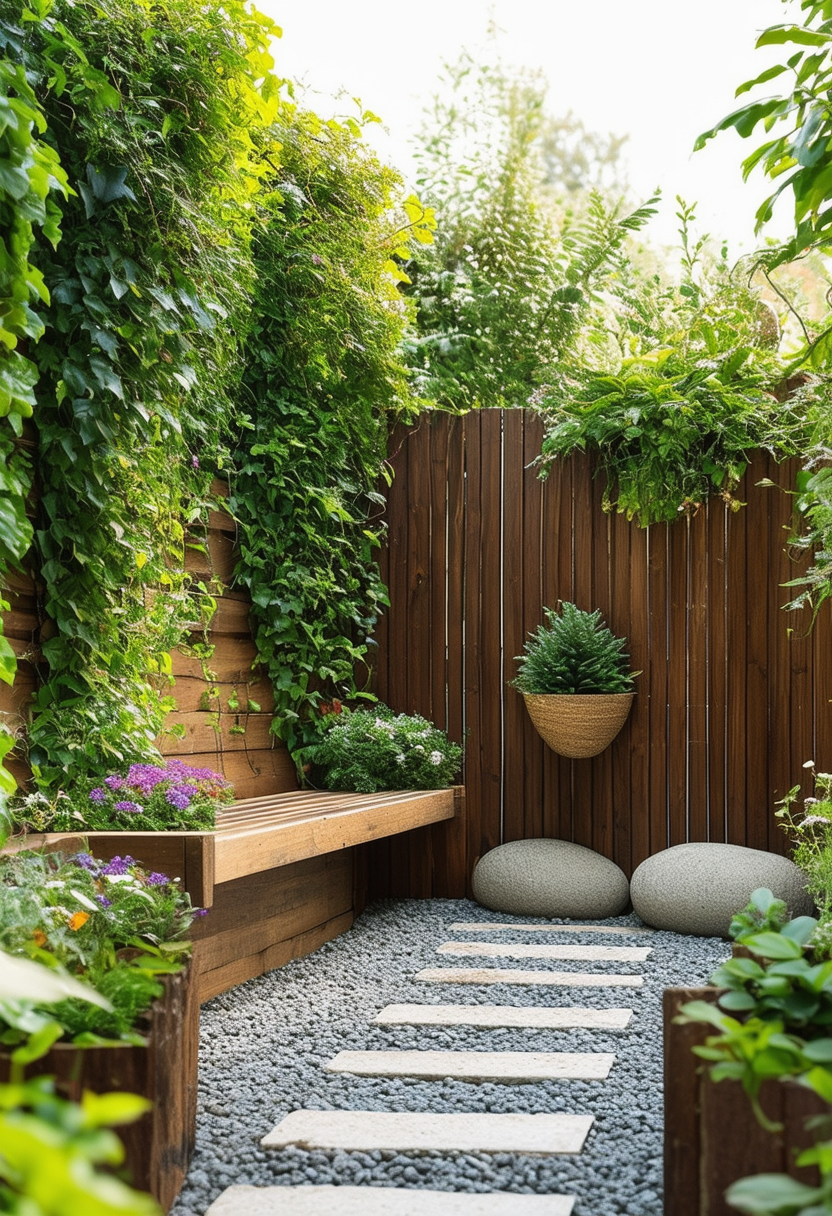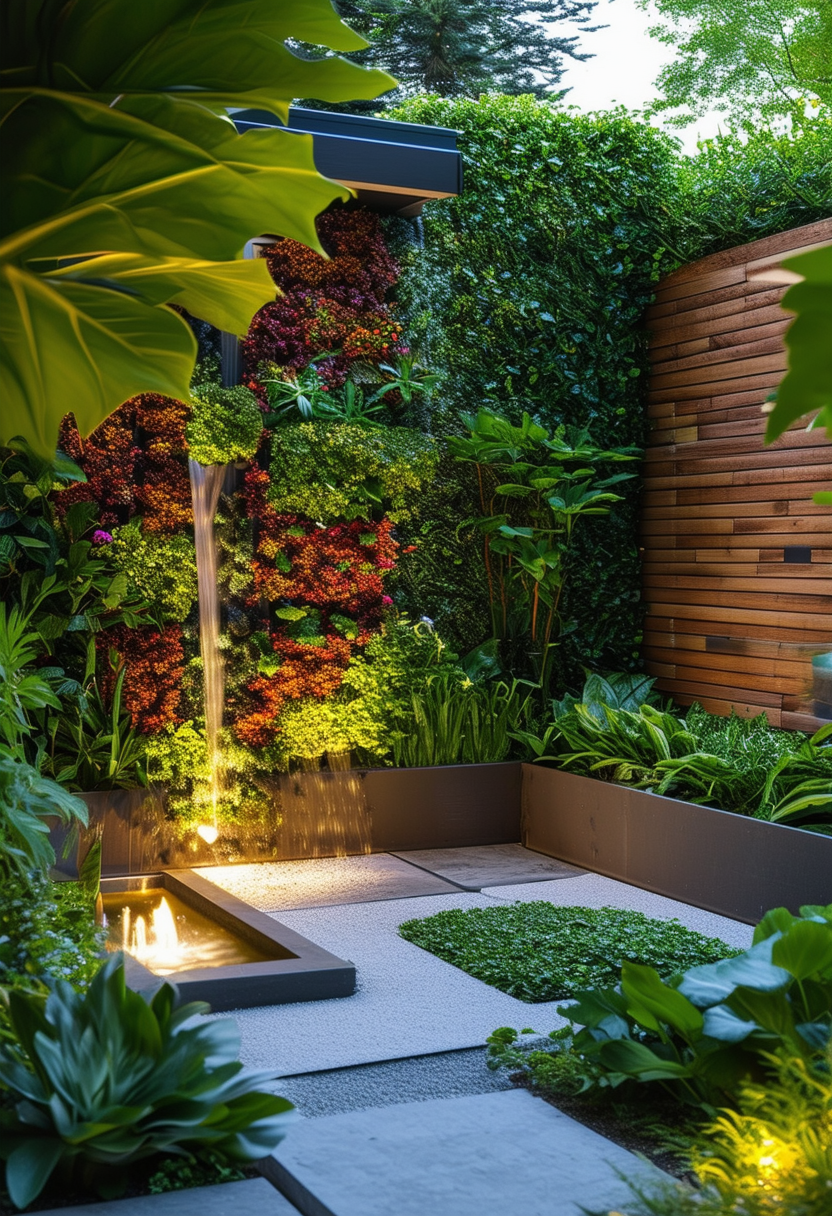Nestled between the hustle and bustle of everyday life lies a serene haven waiting to be discovered. In the world of gardening, size doesn’t always matter, as even the tiniest of spaces can be transformed into a pocket-sized paradise. Join us as we explore the art of designing a small garden landscape, where creativity and imagination know no limits.
Table of Contents
- Creating a Miniature Oasis: Introduction to Small Garden Landscapes
- Maximizing Space: Utilizing Vertical Elements in Small Garden Landscapes
- Choosing the Right Plants: Selecting Varieties for Small Garden Landscapes
- Designing with Purpose: Incorporating Functionality in Small Garden Landscapes
- Enhancing Visual Appeal: Tips for Adding Aesthetics to Small Garden Landscapes
- Optimizing Light and Shade: Strategies for Balancing in Small Garden Landscapes
- Utilizing Focal Points: Creating Points of Interest in Small Garden Landscapes
- Incorporating Water Features: Enhancing Tranquility in Small Garden Landscapes
- Maintaining Balance: Harmonizing Elements in Small Garden Landscapes
- Mindful Maintenance: Strategies for Caring for Small Garden Landscapes
- Q&A
Creating a Miniature Oasis: Introduction to Small Garden Landscapes
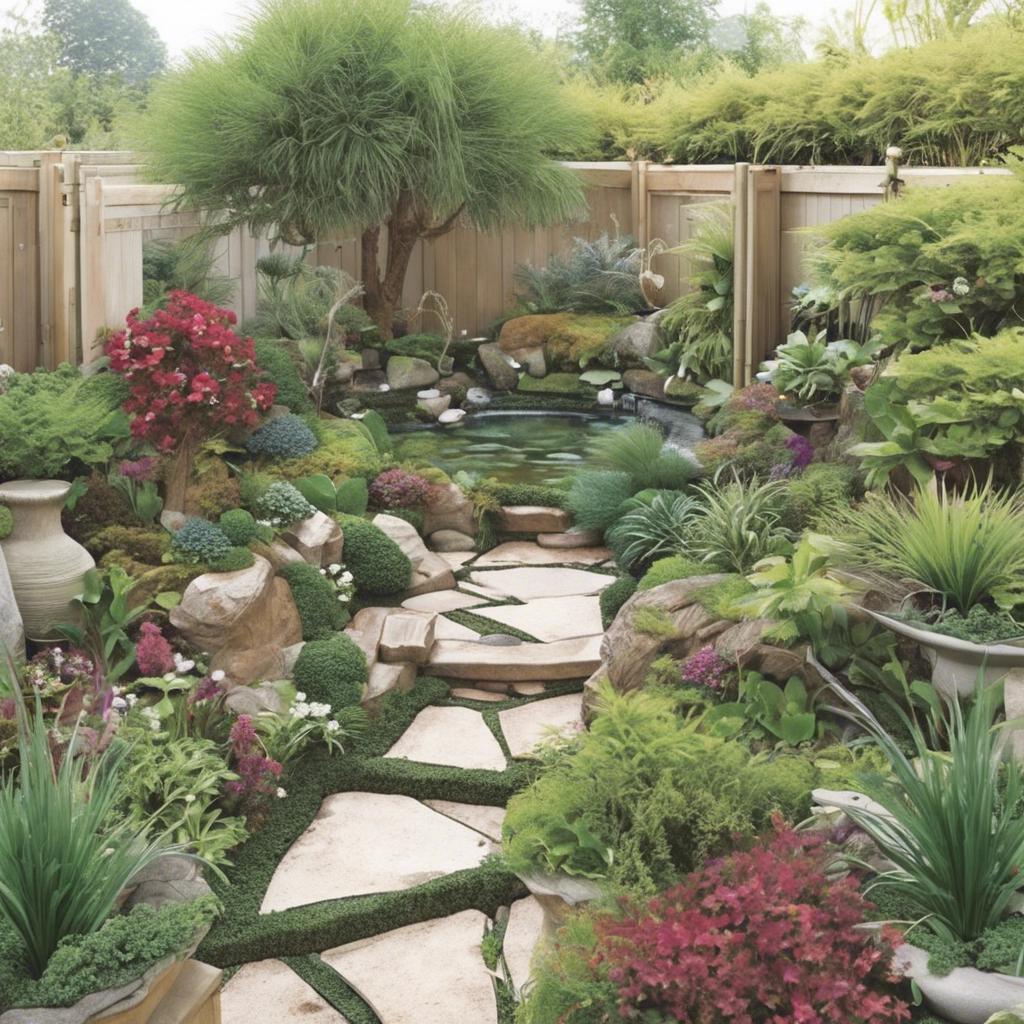
Welcome to the enchanting world of small garden landscapes! In this post, we will dive into the art of creating a pocket-sized paradise in your own backyard. Whether you have a tiny balcony, a small patio, or just a corner of your yard, you can transform it into a miniature oasis that brings peace and tranquility to your space.
Designing a small garden landscape is all about maximizing the space you have and creating a harmonious blend of plants, hardscaping elements, and decorative features. Think of it as creating a little slice of nature within your urban or suburban environment. With careful planning and a dash of creativity, you can turn even the smallest of spaces into a stunning retreat that you can enjoy year-round.
From choosing the right plants to incorporating miniaturized hardscaping elements, there are endless possibilities when it comes to designing a small garden landscape. Consider adding a small water feature, a cozy seating area, or whimsical garden decor to make your mini oasis truly unique. Get ready to unleash your inner landscape architect and embark on a journey to create a world of beauty and tranquility in your own backyard!
Maximizing Space: Utilizing Vertical Elements in Small Garden Landscapes
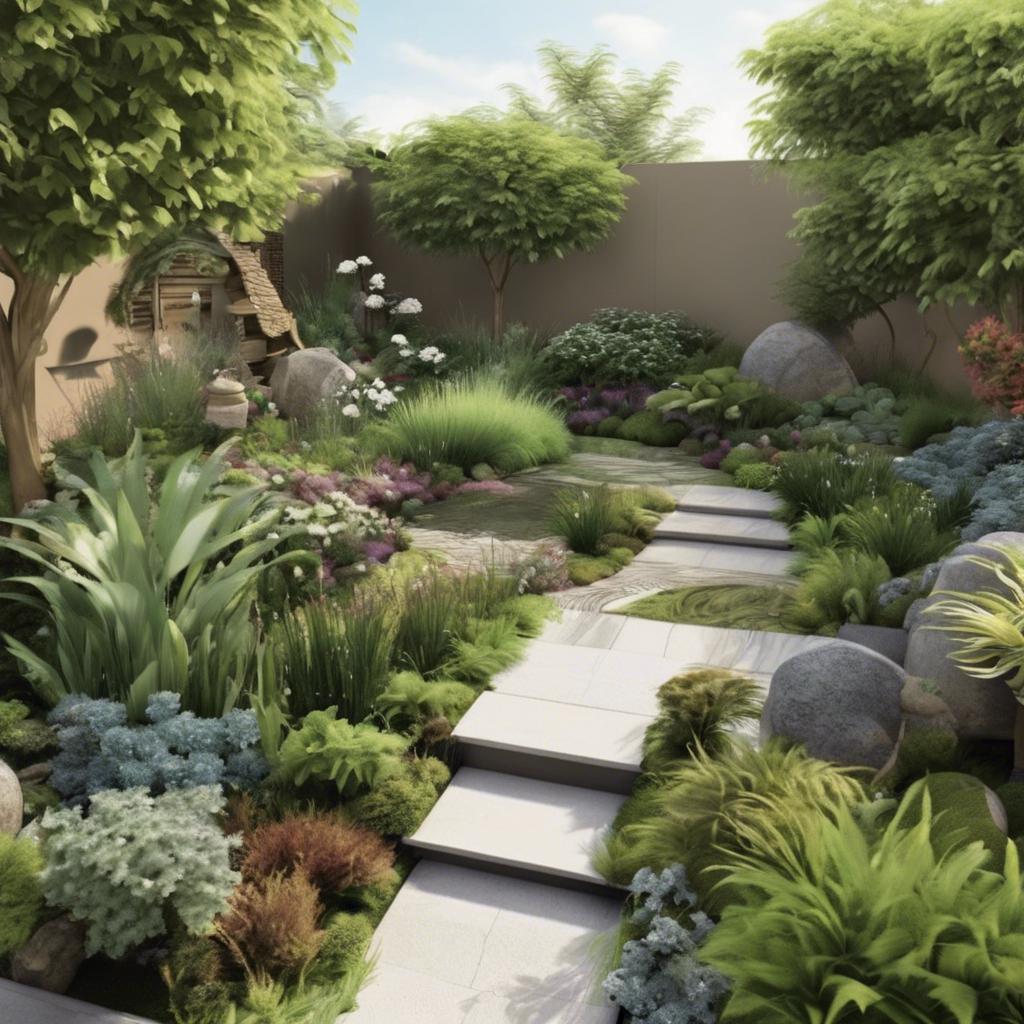
When working with a small garden space, it’s essential to think vertically to maximize every inch of available space. By utilizing vertical elements such as trellises, arbors, and hanging planters, you can create a lush and inviting oasis even in the most compact of areas.
-
- Choose climbing plants that will thrive in your climate and sunlight conditions.
-
- Install a trellis or wall-mounted planter to provide support for your vertical garden.
-
- Consider adding a water feature or vertical garden sculpture to add visual interest to your space.
By incorporating vertical elements into your small garden landscape, you can create a sense of depth and dimension that will make your space feel larger and more inviting. Whether you’re looking to add a cozy seating area, a colorful flower display, or a serene meditation spot, thinking vertically is the key to transforming your small garden into a pocket-sized paradise.
Choosing the Right Plants: Selecting Varieties for Small Garden Landscapes
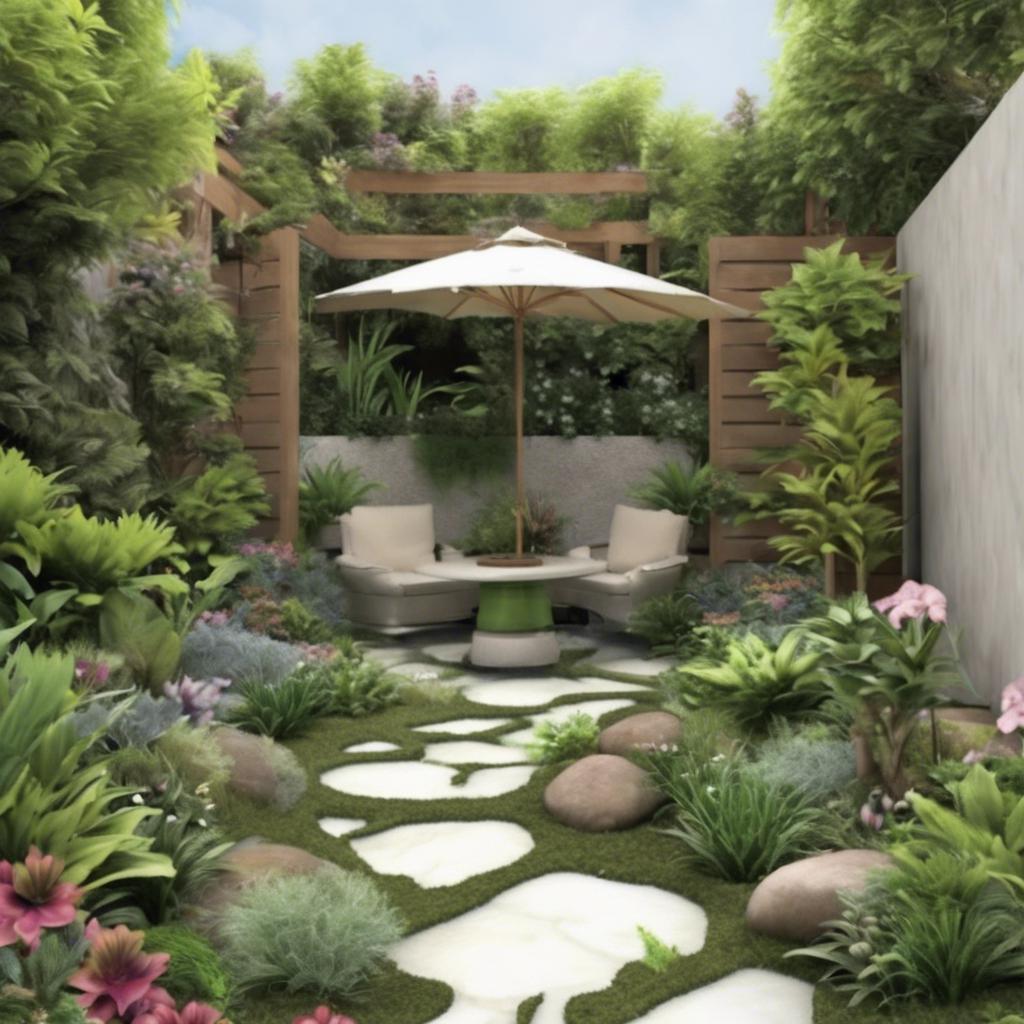
When designing a small garden landscape, it’s essential to carefully choose the right plants that will make the most impact in a limited space. By selecting the perfect varieties, you can create a pocket-sized paradise that is both beautiful and functional.
Consider plants that offer multiple seasons of interest, such as evergreens that provide year-round color and texture. Incorporate a mix of flowering plants, foliage plants, and grasses to add depth and variety to your small garden landscape. Think about the overall aesthetic you want to achieve and choose plants that help you achieve that vision.
| Plant Type | Examples |
|---|---|
| Flowering Plants | Roses, Lavender, Hydrangeas |
| Foliage Plants | Hostas, Ferns, Heuchera |
| Grasses | Ornamental Grasses, Carex |
Don’t be afraid to mix different plant types and experiment with different combinations to create a unique and dynamic small garden landscape.
Designing with Purpose: Incorporating Functionality in Small Garden Landscapes
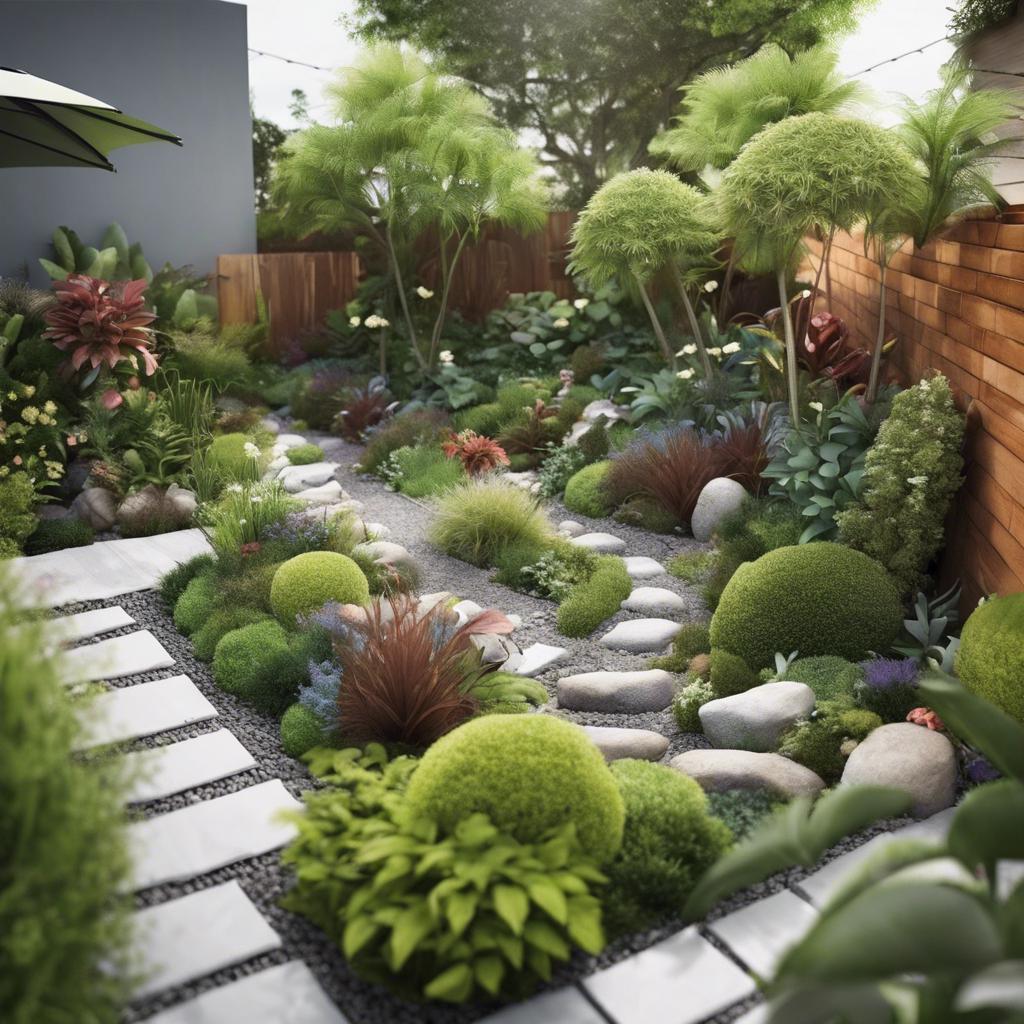
When designing a small garden landscape, it is crucial to maximize every inch of space to create a truly magical outdoor sanctuary. Incorporating functionality in a small garden requires careful planning and creative thinking to ensure that every element serves a purpose. From vertical gardens to dual-purpose furniture, there are endless ways to transform a pocket-sized garden into a paradise.
One key aspect of designing a small garden landscape is to prioritize plants and features that serve multiple functions. Consider incorporating edible plants like herbs and vegetables that not only add beauty to the space but also provide fresh ingredients for cooking. Vertical gardens are another excellent way to make the most of limited space, allowing you to add greenery without sacrificing valuable square footage. Additionally, incorporating seating areas that can double as storage space or serving surfaces can maximize functionality in a small garden.
When designing a small garden landscape, it is essential to strike a balance between aesthetics and practicality. Utilizing versatile materials like weather-resistant wood or composite decking can add warmth and texture to the space while also standing up to the elements. Creating zones within the garden for different activities, such as dining, lounging, and gardening, can help maximize functionality and make the most of a small area. Remember, a thoughtfully designed small garden landscape can truly be a pocket-sized paradise for relaxing, entertaining, and enjoying the beauty of nature.
Enhancing Visual Appeal: Tips for Adding Aesthetics to Small Garden Landscapes
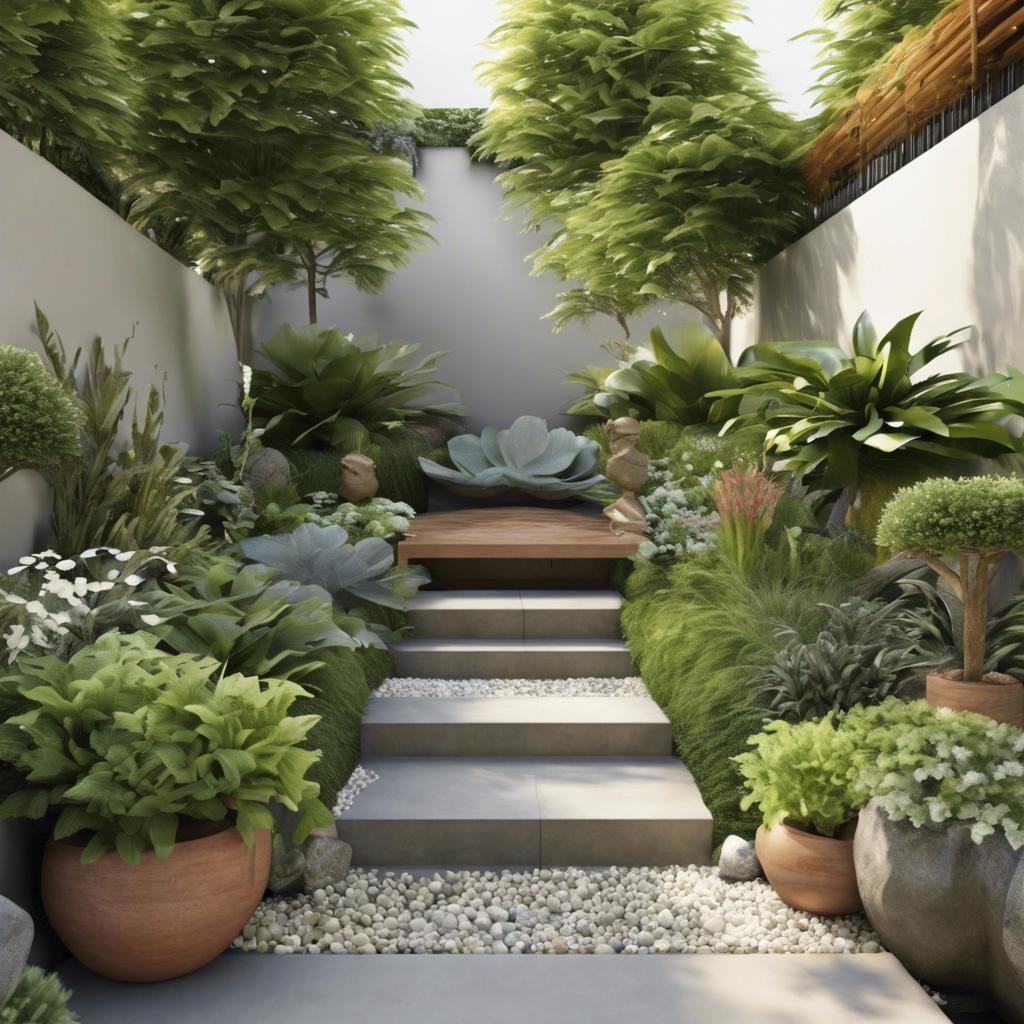
In a small garden space, every inch counts when it comes to enhancing the visual appeal of your outdoor oasis. To create a pocket-sized paradise that is both aesthetically pleasing and functional, consider these tips for adding beauty to small garden landscapes.
One way to maximize limited space is by incorporating vertical elements such as trellises, arbors, or hanging plants. These features not only add visual interest but also draw the eye upwards, creating the illusion of a larger space. Additionally, vertical elements can provide support for climbing plants like ivy or jasmine, adding a touch of natural beauty to your small garden.
Another way to add aesthetics to a small garden landscape is by carefully selecting plants that provide a variety of colors, textures, and heights. Consider planting a mix of flowering plants, evergreens, and ornamental grasses to create visual interest and depth. By strategically placing these plants throughout your garden, you can create a harmonious balance that enhances the overall aesthetic appeal of your outdoor space.
Optimizing Light and Shade: Strategies for Balancing in Small Garden Landscapes
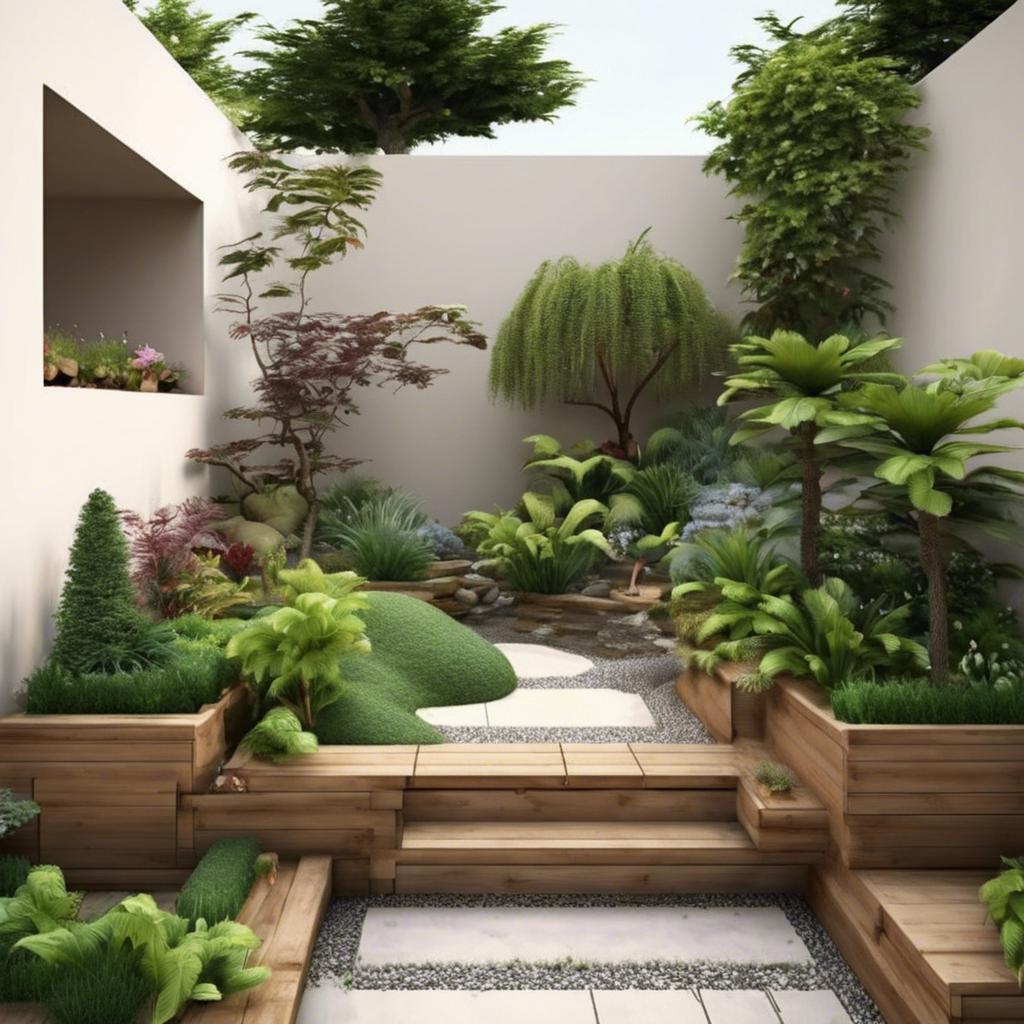
In designing a small garden landscape, the key is to maximize every inch of space while creating a harmonious balance between light and shade. By strategically placing plants and structures, you can create a pocket-sized paradise that feels both spacious and cozy.
One effective strategy for optimizing light and shade in a small garden is to create layers of vegetation. Start by planting taller trees or shrubs along the borders to provide shade and privacy. Then, add medium-sized plants in the middle ground to create depth and texture. use low-growing ground covers or pavers to fill in the gaps and add visual interest.
Another tip for creating balance in a small garden landscape is to incorporate different textures and colors. Mix soft, delicate flowers with bold, architectural foliage to create a dynamic and visually appealing space. Consider planting a variety of plants with different leaf shapes and sizes to add depth and dimension to your garden. Remember to also include elements like rocks, gravel, or water features to break up the monotony and create a sense of tranquility.
Utilizing Focal Points: Creating Points of Interest in Small Garden Landscapes
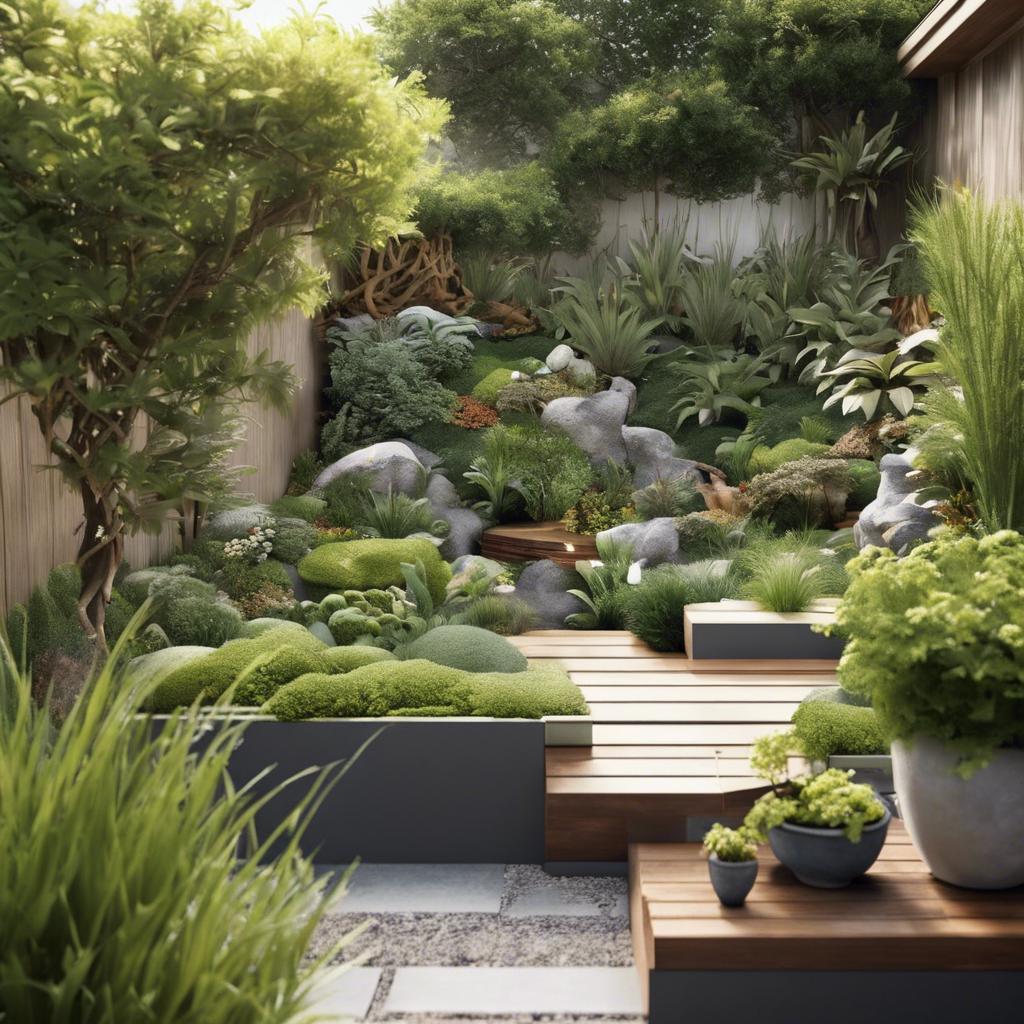
When it comes to designing a small garden landscape, utilizing focal points is essential to create points of interest that will enhance the overall aesthetic of the space. By strategically placing focal points throughout the garden, you can draw the eye to specific areas, creating a sense of depth and visual interest.
One way to create focal points in a small garden landscape is to incorporate unique features such as a water feature or sculpture. These eye-catching elements can serve as the centerpiece of the garden, adding personality and charm to the space. Additionally, using bold colors or interesting textures in your plant selection can help to create visual interest and draw attention to specific areas of the garden.
Another effective way to utilize focal points in a small garden landscape is to create different levels of interest by varying the height of plants and features. This can help to create a sense of dimension in the space, making it feel larger and more dynamic. By incorporating elements such as trellises, arbors, or raised planters, you can add vertical interest and create focal points at different levels throughout the garden.
Incorporating Water Features: Enhancing Tranquility in Small Garden Landscapes
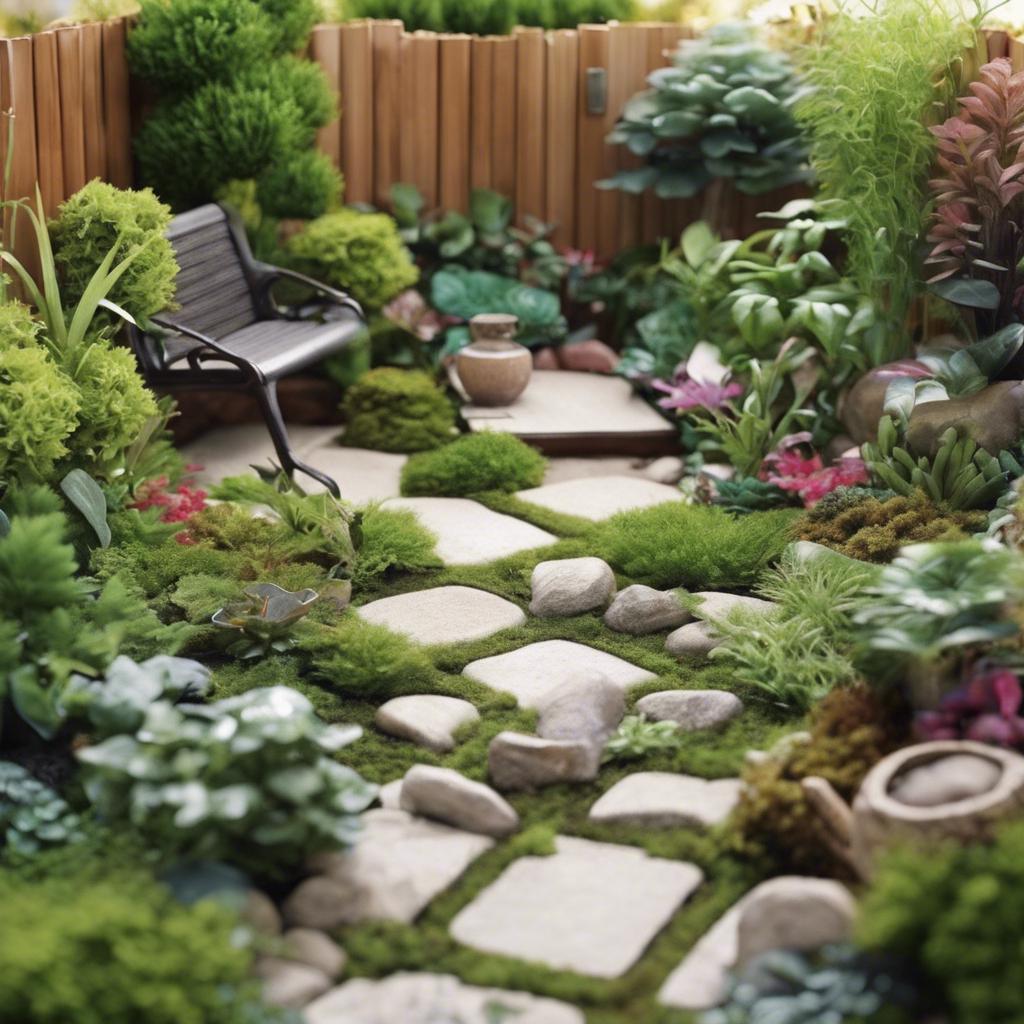
When it comes to designing a small garden landscape, incorporating water features can truly elevate the tranquility and beauty of the space. Imagine stepping into your very own pocket-sized paradise, where the gentle sound of trickling water soothes your senses and lush greenery surrounds you.
One way to enhance the tranquility in your small garden is by adding a small pond or fountain. A pond can be a focal point in the garden, attracting birds and other wildlife, while a fountain can provide a soothing visual and auditory element. These water features not only add a touch of elegance to the space but also create a sense of serenity that can help you relax and unwind after a long day.
Another idea to consider is incorporating a water wall or cascade feature. These vertical water elements can fit seamlessly into a small garden landscape, adding a touch of sophistication and drama. The continuous flow of water down a wall or cascade can create a mesmerizing effect that enhances the overall ambiance of the space.
Maintaining Balance: Harmonizing Elements in Small Garden Landscapes
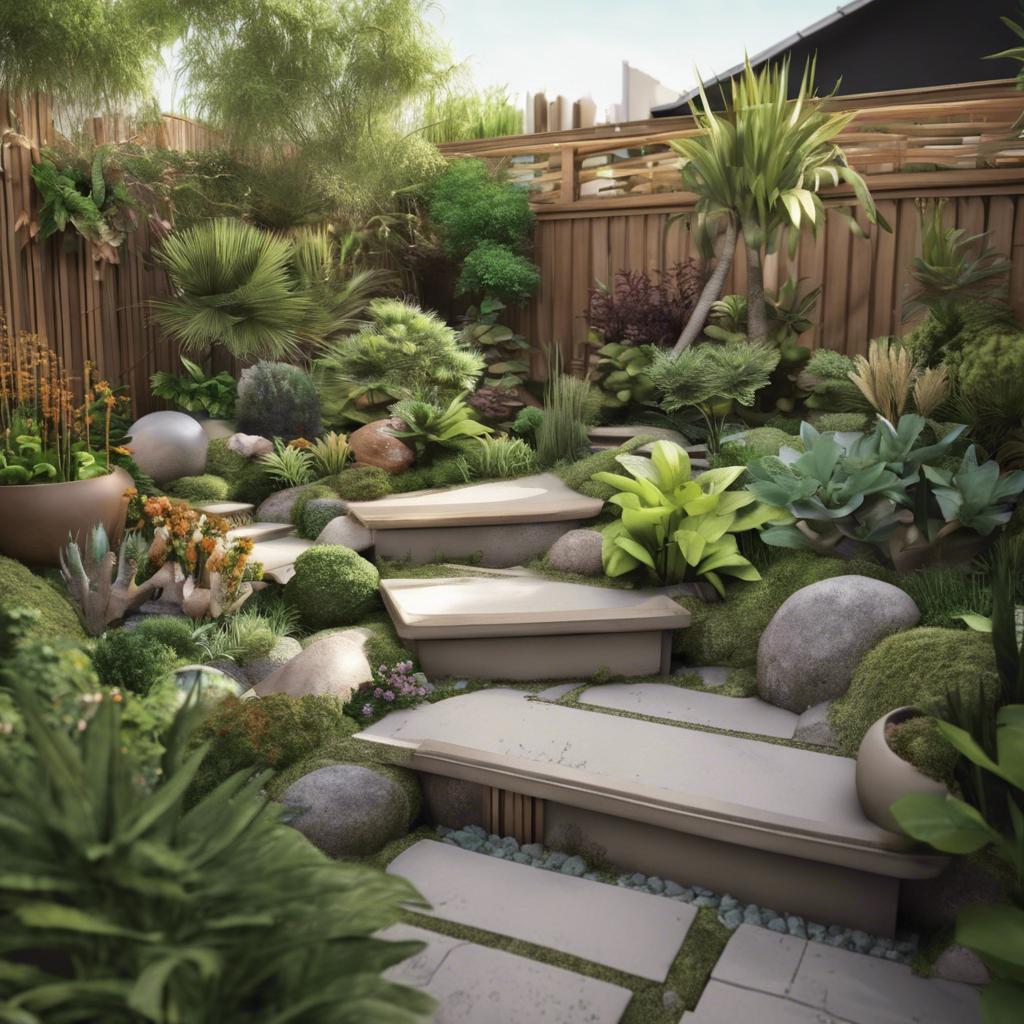
Creating a harmonious oasis in a small garden landscape requires careful planning and strategic design. By balancing key elements such as plants, hardscape features, and focal points, you can transform even the tiniest outdoor space into a pocket-sized paradise. Embrace the challenge of limited square footage by maximizing every inch with thoughtful placement and creative solutions.
When it comes to designing a small garden landscape, less is often more. Opt for a cohesive color scheme to create a sense of unity and flow throughout the space. Consider incorporating a variety of textures and heights to add visual interest and dimension. Utilize vertical space with trellises, hanging planters, and wall-mounted containers to make the most of limited ground space.
Remember that a small garden landscape should be a reflection of your personal style and preferences. Whether you prefer a cozy English cottage garden or a sleek modern oasis, tailor the design to suit your tastes. By striking a balance between form and function, you can create a tranquil retreat that invites relaxation and rejuvenation.
Mindful Maintenance: Strategies for Caring for Small Garden Landscapes
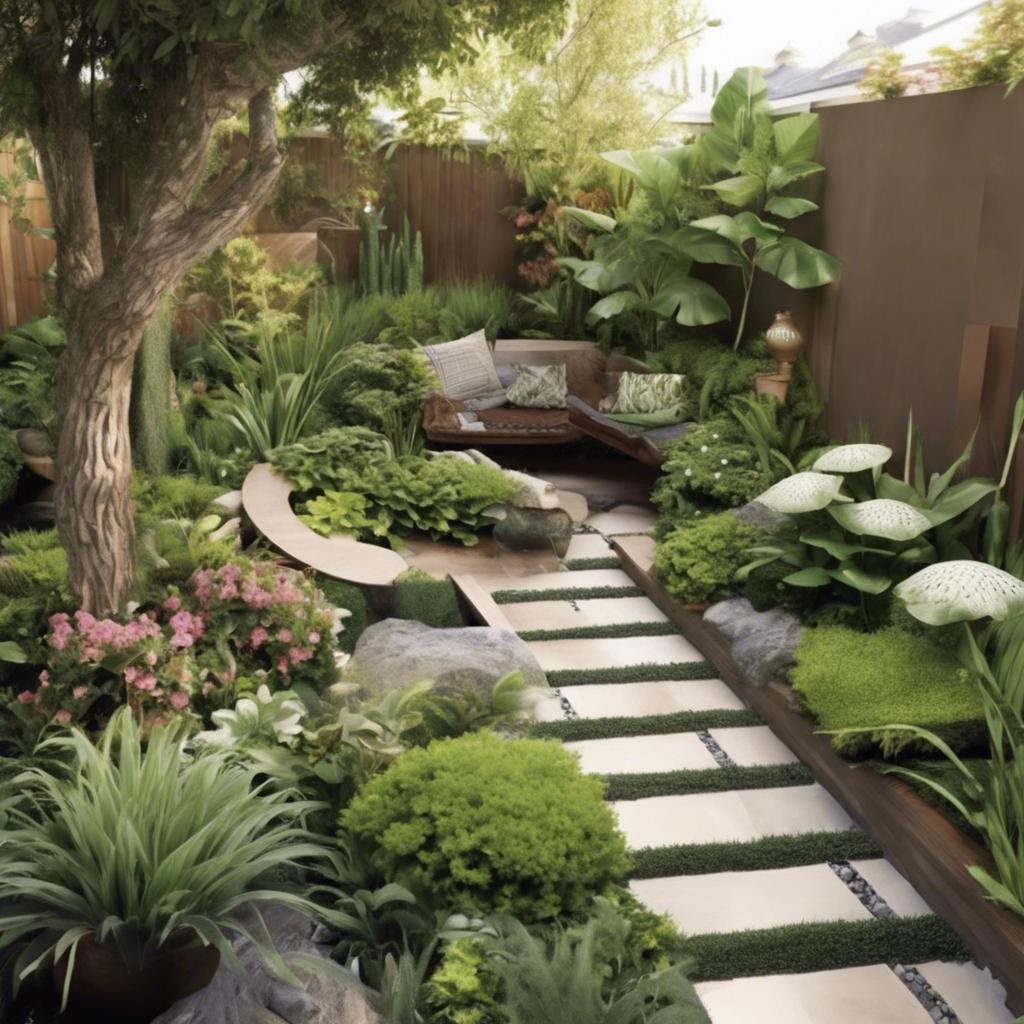
When it comes to designing a small garden landscape, every square inch counts. One of the key strategies for achieving a pocket-sized paradise is to prioritize functionality and maximize the use of space. Consider dividing your small garden into different zones, such as a relaxing seating area, a vegetable garden, and a flowering section. This not only adds visual interest but also allows for efficient use of space.
Another important aspect to keep in mind is the selection of plants and materials. Opt for plants that are suitable for small spaces and easy to maintain, such as dwarf varieties of trees and shrubs. Utilize vertical space by adding hanging baskets or trellises for climbing plants. When it comes to materials, choose lightweight and durable options to minimize maintenance over time.
Remember that the key to a successful small garden landscape lies in attention to detail and regular maintenance. Keep a close eye on the health of your plants, fertilize and water them as needed, and prune them to maintain their shape and size. By staying mindful of the care required for your pocket-sized paradise, you can ensure that your small garden remains a beautiful and relaxing retreat.
Q&A
Q: Why should I consider designing a small garden landscape?
A: Small gardens offer a cozy oasis right at your fingertips, perfect for relaxation and enjoyment.
Q: What are some key design tips for creating a pocket-sized paradise?
A: Utilize vertical space, choose compact plants, and create focal points to maximize the potential of your small garden.
Q: How can I make my small garden feel more spacious?
A: Use mirrors to create the illusion of depth, select light colors for surfaces and furniture, and incorporate multi-functional pieces to optimize space.
Q: What are some low-maintenance plants that are ideal for small gardens?
A: Succulents, ferns, lavender, and ornamental grasses are great choices for a small garden that require minimal upkeep.
Q: How can I incorporate seating into a small garden design?
A: Opt for foldable or stackable furniture that can be easily stored when not in use, or consider built-in seating options like benches or small stools.
